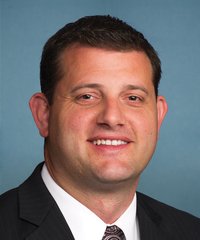
Congressman David G. Valadao was born and raised in Hanford, California in the center of the agriculturally rich Twenty-First Congressional District. As a lifelong resident of the Central Valley, he has been active in agriculture and dairy industry groups, as well as many local charities.
Agriculture drives the American economy and is the backbone of the Central Valley’s economy. California’s diverse agricultural economy provides food for the world, producing nearly $45 billion in agricultural products annually. Our friends and neighbors drive our well-deserved reputation as America’s breadbasket with a little bit of help from nature, and a whole lot of hard work and skill.
As a dairy farmer, I understand the unique and challenging obstacles the agriculture industry faces. Burdensome regulations, environmental conditions, and federal agriculture programs are just a few of the issues that have serious impacts on the agriculture industry in California and across the nation.
Like many Valley farmers, I fully understand the consequences of devastating, senseless, and burdensome federal regulations. The negative impacts of over regulation are especially pronounced when bureaucrats in Washington who create these regulations lack a comprehensive understanding of the realities faced by everyday business owners. As your Representative in Congress, I will continue to fight unnecessary government regulations that have negative impacts on the lives of hard working Americans.
Representing the nation’s largest dairy district, I feel it is of utmost importance to voice the needs of dairy producers in Washington. That’s why I introduced the California Federal Milk Marketing Order Act. This bill will allow producers in California to petition to join the federal order and enter a more level playing field for their milk prices.
In June 2017, the Appropriations Subcommittee released the fiscal year 2017 Agriculture Appropriations bill which provides funding for important agricultural and food programs and services, including food and medical product safety, animal and plant health programs, rural development and farm services, agricultural trade, financial marketplace oversight, and nutrition programs. In total, the legislation provides $20 billion in discretionary funding, prioritizing funding for rural communities, farmers, ranchers, food and drug safety, and nutrition for those in need while reducing unnecessary and burdensome regulations that harm our farmers and ranchers.
To ensure Central Valley communities qualify for rural assistance through federal programs, I introduced H.R. 3890, the Making Rural America Count Act. The legislation excludes incarcerated prison populations from overall population eligibility requirements as they pertain to Rural Development Programs administered by the USDA, ensuring small communities have access to critical federal funding.
I will continue working to promote legislation to strengthen agricultural programs, increase job opportunities, lower food cost, and ensure our farmers have the essential security needed to protect their businesses and provide food for the nation.
In order to foster a healthy and hospitable climate for agricultural production, it is important we proactively combat current and future threats facing agriculture. For too long, heavy-handed federal regulations have severely reduced water deliveries to the Central Valley’s farmland by requiring billions of gallons of water to be flushed into the ocean. While legislation cannot make it rain, it can provide relief by addressing complex and contradictory laws, court decisions, and regulations at the state and federal level that have made this drought increasingly detrimental.
While we were able to implement temporary drought relief provisions during the 114th Congress, a complete and long-term agreement is still needed. In order to achieve a comprehensive solution, I introduced H.R. 23, the Gaining Responsibility on Water (GROW) Act on the first day of the 115th Congress. My bill, the GROW Act, will enact policies to expand our water infrastructure and allow for more water conveyance while protecting the water rights of users across the state.